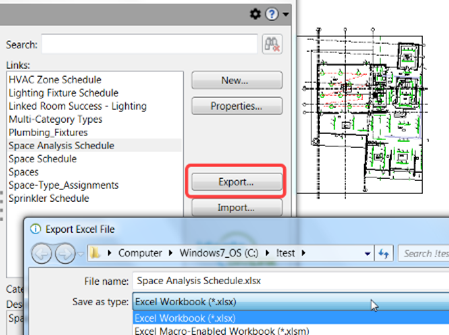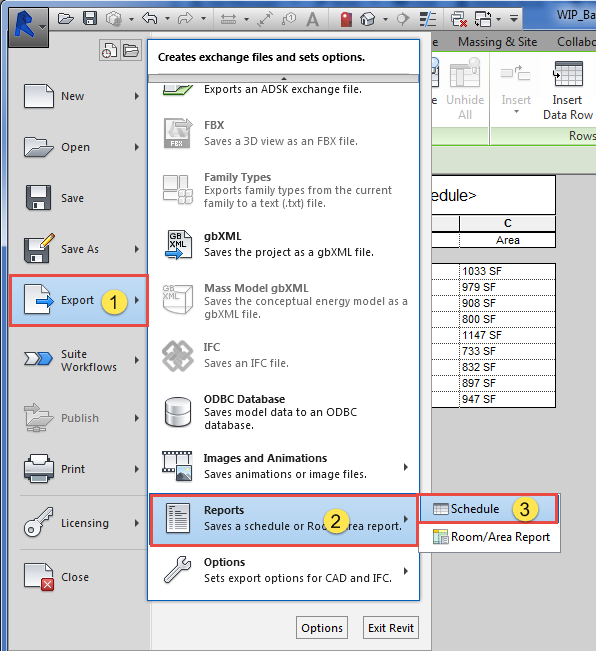Excel-to-Revit: A Game-Changing Workflow for Architectural Design - Introducing the Tricks
Are you tired of investing hours on building layout? Look no more! Presenting excel-to-revit, the game-changing process that will certainly reinvent your design procedure. With excel-to-revit assimilation, you can simplify your building style, unlock efficiency, and make best use of cooperation within your team. In this short article, we will certainly unveil the secrets of this effective device, showing you how it can change your design jobs. Obtain all set to take your architectural style to the following level with excel-to-revit!
The Power of Excel-to-Revit Integration

Picture the comfort of being able to upgrade and edit project data in Excel, and promptly see those adjustments reflected in your Revit design. Say goodbye to hand-operated information entrance or tiresome updates. With Excel-to-Revit integration, you can save time and lower mistakes by leveraging the power of Excel's formulas and features to instantly create accurate data in Revit.
Not only does this integration enhance effectiveness, yet it likewise enhances collaboration among group members. You can quickly share Excel data with coworkers, who can after that import the data right into their Revit versions. This promotes a smooth exchange of details and ensures that everyone is collaborating with the most current information.

Improving Building Layout With Excel-To-Revit
Improving building design is made less complicated with using Excel-to-Revit (revit plugins). With this powerful assimilation, you can enhance your process and conserve beneficial time throughout the layout process. By leveraging the capacities of Excel and Revit, you can perfectly move data between the 2 systems, getting rid of the need for hand-operated information access and lowering the danger of errors
Excel-to-Revit enables you to import and export data effortlessly, allowing you to conveniently upgrade and customize your architectural layouts. You can develop timetables, compute quantities, and create records in Excel, and after that move that information directly into your Revit design. This assimilation makes sure that your design details is always updated and integrated, removing the need for manual updates and decreasing the opportunities of variances.
By utilizing Excel-to-Revit, you can likewise benefit from the effective computational capacities of Excel. You can do complicated calculations, examine data, and automate recurring jobs, all within Excel. With simply a few clicks, you can import the outcomes back right into Revit, allowing you to make enlightened layout decisions and optimize your architectural layouts.
Unlocking Efficiency: Checking Out the Excel-to-Revit Operations
Maximize your productivity by flawlessly incorporating Excel and Revit for an extra reliable workflow. With the Excel-to-Revit operations, you can open a whole brand-new level of effectiveness in your architectural design procedure. By utilizing the power of Excel's information monitoring capabilities and combining it with the adaptability and precision of Revit, you can streamline your design procedure and conserve useful time.
One of the vital benefits of this integration is the capacity to import and export data in between Excel and Revit. This indicates that you can easily transfer job information, such as area routines or material amounts, from one software program to the other, eliminating the need for hand-operated information entry and decreasing the possibilities of errors. You can additionally develop custom solutions and calculations in Excel to automate repetitive tasks and carry out complicated computations, which can after that be seamlessly integrated right into your Revit versions.
In Addition, the Excel-to-Revit workflow enables far better sychronisation and cooperation in between staff member. With Excel working as a main data center, several team members can work on various aspects of the project all at once, updating and sharing info in real-time. This not just enhances interaction yet additionally makes certain that everybody is functioning with the most updated data, getting rid of the danger of incongruities.
Taking Full Advantage Of Collaboration: Excel-to-Revit for Architectural Teams
By perfectly incorporating Excel and Revit, building groups can substantially boost collaboration and achieve a lot more reliable style results. When using this powerful workflow, you can quickly transfer data in between Excel spreadsheets and Revit models, simplifying the layout process and enhancing communication amongst group participants.
Moreover, by leveraging Excel's effective estimation capabilities, you can do complicated estimations and evaluation on your style data, providing important insights and driving educated decision-making. This assimilation additionally enables you to export data from Revit her explanation to Excel, enabling you to develop thorough records, charts, and charts for discussions and analysis. This collaborative workflow promotes reliable interaction and coordination amongst group participants, as Excel serves as a central center for information monitoring and sharing.
Overall, by accepting the Excel-to-Revit workflow, architectural teams can achieve greater levels of collaboration, performance, and precision in their layout procedure. import excel into revit. This assimilation equips groups to collaborate seamlessly, making sure that everybody gets on the very same web page and adding to the success of the project
Revealing the Secrets of Excel-to-Revit Assimilation

Among the tricks of Excel-to-Revit integration is the capacity to utilize the power of solutions and computations in Excel to drive criteria and create complicated geometries in Revit. You can connect Excel spreadsheets to Revit families, allowing you to input data directly right into the spread sheet and have it automatically upgrade in the Revit version. This streamlines the design procedure and guarantees precision and consistency throughout the job.
Another trick is the capacity to produce customized schedules and records in Excel, making use of information extracted from Revit. This permits you to assess and envision project details in such a way that is not possible within Revit alone. You can easily create quantity liftoffs, price price quotes, and job timelines, providing valuable understandings for decision-making and job monitoring.
Additionally, Excel-to-Revit integration makes it possible for reliable partnership amongst employee. Several individuals can function on the exact same Excel spread sheet concurrently, making it simpler to work with and track modifications. You can also use Excel's commenting feature to give feedback or connect layout alterations.
Conclusion
By integrating the power of Excel and Revit, architects can now work much more efficiently, save time, and create better styles. Check This Out Begin integrating excel-to-revit integration right into your architectural layout procedure today and transform the method you work.
With simply a few clicks, you can import the outcomes back right into Revit, enabling you to make enlightened style decisions and optimize your architectural styles.
By making use of the power of Excel's data administration capabilities and combining it with the adaptability and accuracy of Revit, why not find out more you can streamline your style procedure and conserve useful time.
By seamlessly integrating Excel and Revit, architectural teams can substantially improve cooperation and accomplish much more effective design end results. When utilizing this effective process, you can easily move data in between Excel spreadsheets and Revit models, improving the layout process and improving communication among team participants.Additionally, by leveraging Excel's powerful estimation capacities, you can execute intricate estimations and analysis on your design data, providing useful understandings and driving educated decision-making.